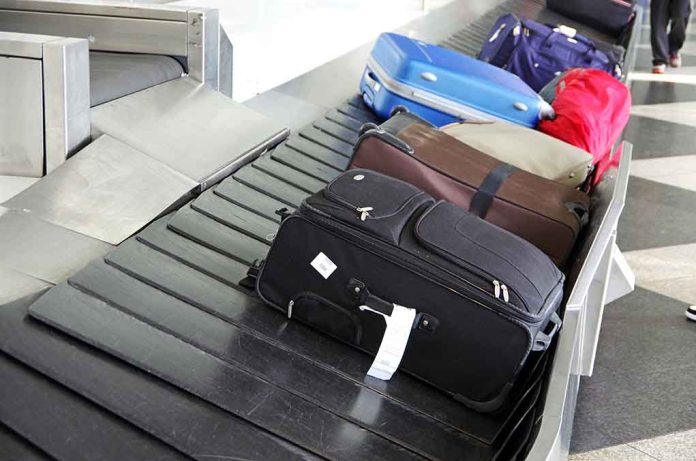
An air traffic controller admits Newark Liberty International Airport is unsafe for travelers as critical staffing shortages and equipment failures threaten passenger safety amid unprecedented flight delays and cancellations.
Key Takeaways
- Newark Airport has lost 20% of its air traffic controllers, creating dangerous operational conditions and forcing United Airlines to cancel 35 roundtrip flights daily.
- The FAA faces a nationwide shortage of approximately 3,000 air traffic controllers, with Newark being particularly affected, leading to required flight reductions.
- Outdated equipment and technology failures have caused flight diversions and cancellations, with budget cuts exacerbating maintenance issues.
- United Airlines CEO Scott Kirby has warned customers that the FAA staffing issues cannot be resolved in the near term, with full staffing potentially taking 3-4 years to achieve.
- While United’s concourse has been remodeled, most of Newark’s infrastructure remains in poor condition, contributing to its unfavorable rankings compared to other international airports.
Air Traffic Control Crisis Threatens Safety
Newark Liberty International Airport is currently facing a severe staffing crisis that has pushed it to the brink of operational safety. The airport has lost a staggering 20% of its air traffic controllers in recent months, creating a dangerous situation for travelers passing through one of the nation’s busiest transportation hubs. This staffing shortage has resulted in Newark leading the nation in flight delays and cancellations, with recent reports showing 42 flights or 8% of departures canceled on a single Monday morning alone. The situation has become so dire that United Airlines, Newark’s dominant carrier, has been forced to cancel 35 roundtrip flights daily to mitigate the chaos.
The problem extends beyond Newark to the entire national air traffic control system. The Federal Aviation Administration (FAA) is currently short approximately 3,000 air traffic controllers nationwide, with the situation particularly severe in New York City’s crowded airspace. This shortage has forced the FAA to implement flight reductions, while simultaneously attempting to boost hiring and retention rates for controllers. However, these efforts face significant challenges as the specialized training required for air traffic controllers takes considerable time, and the current working conditions are driving away potential recruits.
The revelation that air traffic controllers lost contact with planes at Newark Airport last week is deeply concerning. EWR is a critical transportation hub for our nation, and lies in some of the most congested airspace in the world.
Congress and the FAA have a responsibility to… pic.twitter.com/S4TVn9ZSB8
— Cory Booker (@CoryBooker) May 6, 2025
Equipment Failures Compound Staffing Issues
Beyond the critical staffing shortages, Newark Airport is plagued by outdated equipment that has contributed significantly to flight issues and safety concerns. Recent technology failures have caused numerous flight diversions and cancellations, creating a perfect storm of operational challenges. Budget cuts at the FAA have only exacerbated these equipment maintenance issues, leaving controllers to work with unreliable systems that compromise their ability to safely manage air traffic. The situation recently reached a crisis point when air traffic control screens went dark at Newark, creating a potentially catastrophic safety risk.
“There is no way to resolve the near-term structural FAA staffing issues,” he said in a letter to customers released Friday evening said Scott Kirby United Airlines CEO
The FAA has announced plans to introduce new air traffic control equipment and is taking steps to improve the current technology infrastructure. However, these improvements will take time to implement, leaving passengers and airlines to navigate the dangerous conditions in the interim. United Airlines has taken matters into its own hands by voluntarily reducing its schedule at Newark to minimize disruptions, a move that reflects the severity of the situation and the airline’s concern for passenger safety in the face of these systemic failures.
I fly all the time. The system is safe.
But we must build an all new air traffic control system to make sure the system stays safe and prevent outages like Newark. pic.twitter.com/3rlER9nkMw
— Secretary Sean Duffy (@SecDuffy) May 6, 2025
Infrastructure Deterioration Adds to Passenger Woes
Beyond the critical operational issues, Newark Airport’s infrastructure has been described as deteriorating and in poor condition, with the exception of United’s recently remodeled concourse. Passengers frequently encounter malfunctioning elevators and escalators, unacceptable levels of cleanliness, and outdated facilities that fail to meet the standards of a world-class international airport. These infrastructure deficiencies not only create inconveniences for travelers but also reflect a broader pattern of neglect that raises serious questions about the overall safety and management of the facility.
“We’re hoping in three to four years we can get to full staffing, not 20 years,” he said. “How do you make up the gap? We can’t snap our fingers to make up the numbers. said Sean Duffy FAA Administrator.
For travelers with upcoming flights through Newark, the outlook remains bleak. Transportation experts recommend booking flights earlier in the day when possible, as delays tend to compound throughout the day. Additionally, passengers should explore rebooking options and maintain flexibility in their travel plans. However, it’s important to note that compensation for delays or cancellations may not be available as these issues are typically classified as being outside the airline’s control. The situation at Newark Liberty International Airport represents a perfect storm of government mismanagement, budget shortfalls, and infrastructure neglect that is now jeopardizing public safety.









